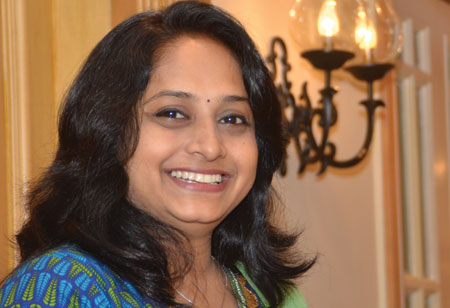The Textile Industry and its Future Potential in India
By Vaishali Deokar, Promotions & Communication Manager, Society of Dyers and Colourists EC

Vaishali Deokar, Promotions & Communication Manager, Society of Dyers and Colourists EC
Let me accept it’s an immense pleasure for me to express out through this article, as it’s the first communication of this very sort. I would love to begin with the hint from the request letter written to me imploring to write. So catching, that the first link from letter let me admit I am not an expert. However, being a lively creature and being into this role for the last few years I have experienced and I do have insight of the industry to throw light on.
We in India refer to it as a “Consultant”, while in China they call them an “Influencer. We as education charity are in to sort of consultative field. I mentioned “sort of” as we don’t work project to project or client to client, rather we emphasize on over all education or awareness and we pick the right audience mix. “Pick” may not be an appropriate verb. We involve, engage, educate and certify tomorrow’s professionals also availing experts of global reputation as well our in-house talent to shape it up.
“Colour” is an integral part of anything however, it has a different importance in textile industry. Needless to mention textile industry is one of the oldest industries in India. They have groomed and grown to a large extent over the years and not losing its existence in each form it transformed through. It still exists in some parts, in an unorganized and non-techno savvy form.
“It is very important to understand the needs of the industry, as it may have to be updated on trends and avenues to be sustainable and greener”
We as the Society of Dyers and Colorists’ do have a great connect with textile industry all over the globe. It is extraordinary fun and pride when you are working as a marketing and sales professional where your organization is not a profit making organization. Working at a charitable organization for the first time I have been experiencing and venturing with pride being part of such an organization for last few years.
No profit doesn’t mean No revenue. Fund raising needs to be on a continual basis so as to run the show without compromising on quality or quantity in terms of consultative services that it may be in the simplest form of training, examining and certifying to the academic pursuers to the international conference where in global expatriates register their views in open forum.
It is very important to understand the needs of the industry, as it may have to be updated on trends and avenues to be sustainable and greener. And then accordingly design the offering mix which demands the time and availability of relevant experts too. It’s about winning sponsorships and memberships, then showing and delivering value tangibly to those who invest time and money.
We have been conventionally carrying out Membership, Training, Publications, Professional Colouration Qualifications, Bursaries, Awards, Standards, Colour Index , Events, Competitions, Colour Experience with the changes in response, efforts put in to show value to who invest, the current mix is Brands, Retailers, Manufacturers, Dyers, Fashion industry, Academic. The Textile and Garment sector contributes 14% to industrial production, 4% to India’s GDP and constitutes 13% of the country’s export earnings. The domestic textile and apparel industry in India is estimated to reach USD 100 Billion by 2016-17 from USD 67 Billion in 2013-14 is what Google states. We shall put in our tiny effort in seeing the inclination, the growth do not imbalance optimization of resources, sustain what’s good, adopts what’s effective, efficient, greener.
India’s textiles sector is one of the mainstays of the national economy. It is also one of the largest contributing sectors of India’s exports contributing 11 per cent to the country’s total exports basket. The textiles industry is labor intensive and has one of the largest employers. The industry realized export earnings worth US$ 41.57 billion in 2013-14. The Indian government has come up with a number of export promotion policies for the textiles sector. It has also allowed 100 per cent FDI in the Indian textiles sector under the automatic route.
Some of the initiatives taken by the government to further promote the industry are as under:
- Duty free entitlement to garment exporters for import of trimmings and other specified items increased from 3 per cent to 5 per cent. This initiative is expected to generate an additional RMG exports estimated at Rs 10,000 crore (US$ 1.61 billion).
- The government has also proposed to extend 24/7 customs clearance facility at 13 airports and 14 sea ports resulting in faster clearance of import and export cargo.
- The proposal for imposing duty on branded items was dropped providing relief to the entire value chain.
The future for the Indian textile industry looks promising, buoyed by both strong domestic consumption as well as export demand. With consumerism and disposable income on the rise, the retail sector has experienced a rapid growth in the past decade with the entry of several international players like Marks & Spencer, Guess and Next into the Indian market. The organized apparel segment is expected to grow at a compound annual growth rate (CAGR) of more than 13 per cent over a 10-year period.
This is really encouraging. We Educational Charity shall continue putting our tiny effort in seeing the inclination, the growth do not imbalance optimization of resources; sustain what’s good adopt what’s effective, efficient and greener. We now are in China, Hong Kong, India, Pakistan, UK. We are looking forward to spread all over ASEAN countries by 2020.




